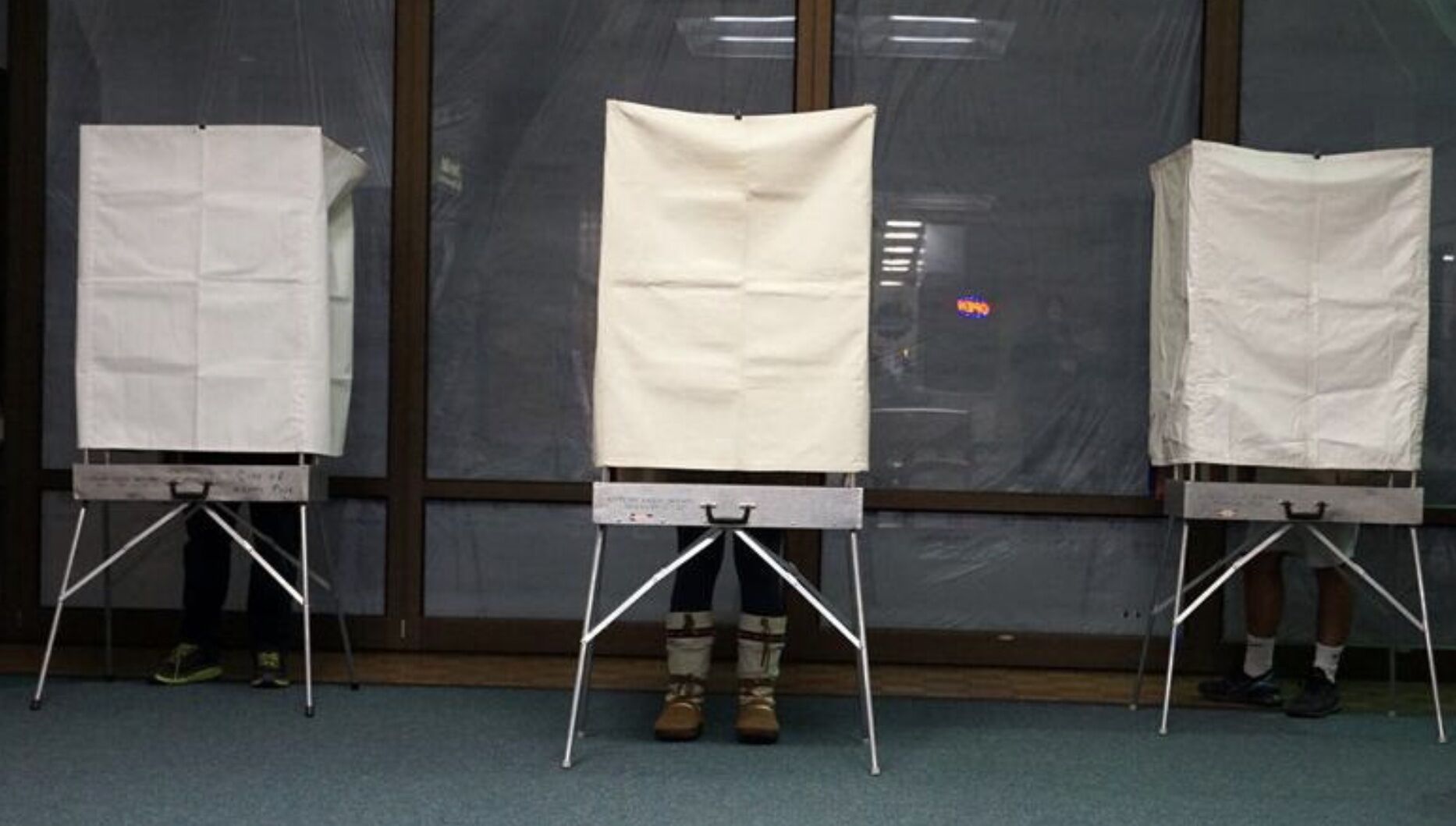| Linda F. Hersey ∙ Fairbanks Daily News-Miner |
Ranked choice voting will get its real test at the polls this year, after Alaska voters adopted the new system in 2020.
Nationally, ranked choice voting is drawing more interest — and in some cases opposition — in cities and states.
”While ranked choice voting is a new concept to many Americans it has a 100-year history in the U.S., with many cities adopting the system in the 1920s and 1930s.
Florida is poised to ban ranked choice voting. Republican Florida Gov. Ron DeSantis is expected to sign an election reform bill this week that prohibits it.
Florida will become the second state to bar ranked choice voting after Tennessee Gov. Bill Lee signed a bill this month blocking the voting method from adoption in his state.
Alaska and Maine are the only states with ranked choice voting for all congressional and state elections. Most U.S. states have a winner-take-all system, meaning the highest vote-getter wins, even if the share of the vote is under 50%.
Maine adopted ranked choice voting six years ago, but Alaska enacted ranked choice in 2020 after a statewide ballot measure passed.
In 2022, political observers in Alaska say that ranked choice voting may work well in elections where there is a crowded field of candidates, such as the governor’s race.
Voters do not have to choose just one candidate. Instead they rank the candidates by preference.
Running for governor are three Republicans: incumbent Mike Dunleavy, Kenai Peninsula Mayor Charlie Pierce and freshman state Rep. Christopher Kurka.
Former Gov. Bill Walker, an independent, and Democrat Les Gara, a former assistant attorney general and Alaska House member, also have announced bids for governor.
Alaska’s primary is scheduled for Aug. 16, and the general election is Nov. 8. The filing deadline for candidates is June 1.
More than a dozen cities have adopted ranked choice voting, including Minneapolis and St. Paul, Minn., as well as San Francisco, Oakland and other Bay Area cities in California.
While ranked choice voting is a new concept to many Americans it has a 100-year history in the U.S., with many cities adopting the system in the 1920s and 1930s, according to the Ranked Choice Voting Resource Center.
Ranked choice voting began to lose momentum as machines began counting votes; single choice voting could be tallied through automation.
With Alaska’s ranked choice voting system being fully deployed in 2022, the Alaska Division of Elections is urging voters to familiarize themselves with how the system works.
Alaska’s adoption of an initiative in 2020 created a nonpartisan top four primary election and ranked choice vote in the general election.
People will cast their ballots in order of preference. In the primary, the top four voter-getters will advance to the general election, regardless of party affiliation.
Advocates say that by ranking multiple candidates, voters are assured a voice if their top candidate does not advance.
Cathy Giessel, a former Republican state senator, said that ranked choice voting lets voters “fill out the ballot as much as they would like.”
“To some, that means one ranking only; to other voters, they are OK going all the way down to a fourth choice vote,” Giessel said in her monthly newsletter.
“For example, a moderate Republican, in a race for State House with three Republicans and one Democrat, may fill out all four rankings. But some people can’t bring themselves to show any support for certain candidates … That’s OK. They may only rank three candidates or even only two candidates,” Giessel said.
Alaskan voters at least for now seem nonplussed about the change in 2022. “I don’t know how I feel about it because I haven’t done it yet,” said James Leber, an Alaska voter who identified himself as an instructor and downtown Fairbanks resident. “I said ‘yes’ on the 2020 ballot for ranked-choice voting. I think it will save money. You won’t need runoffs if someone doesn’t get 50% of the vote.”





